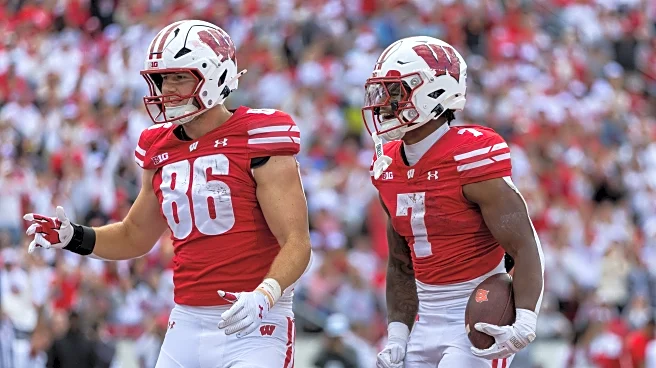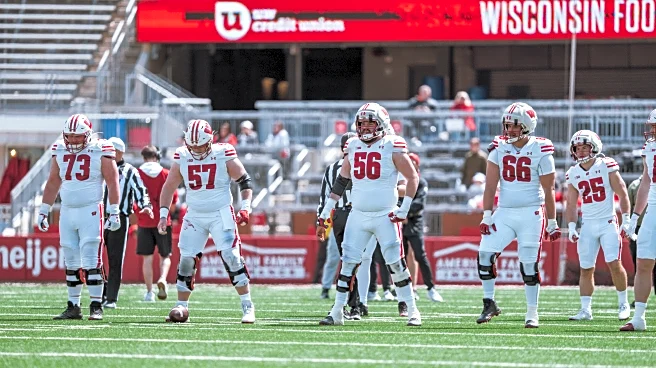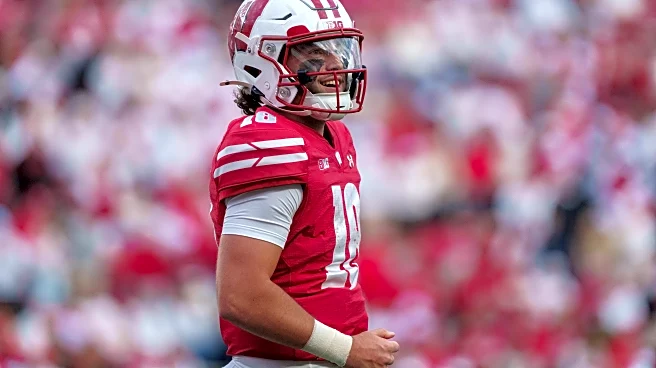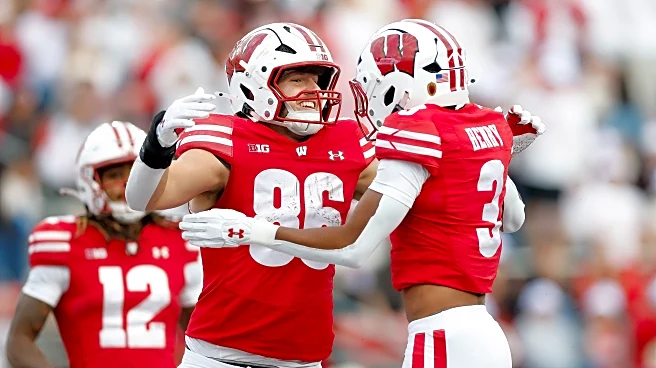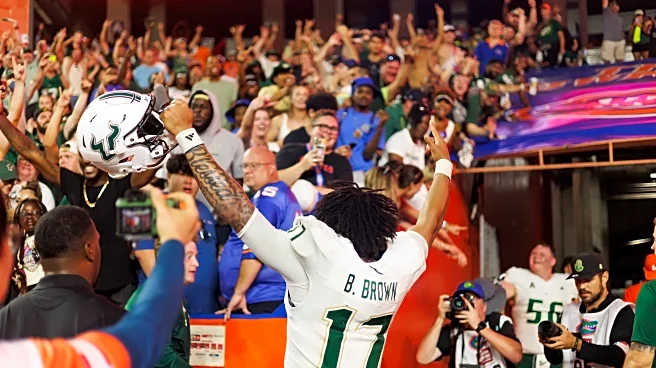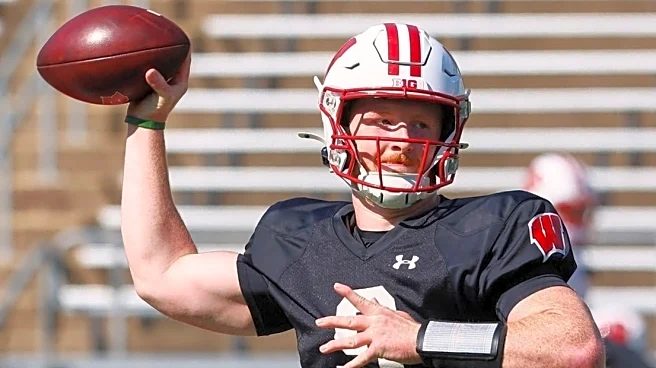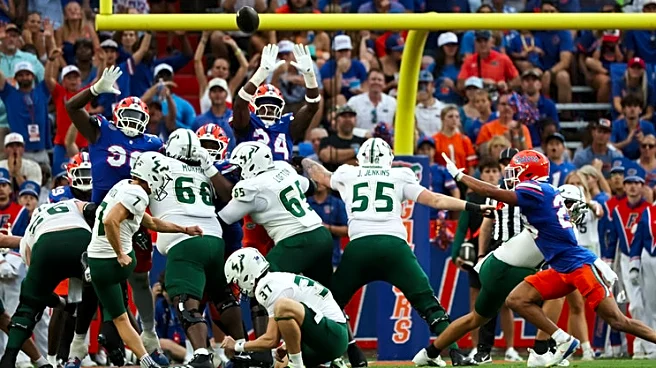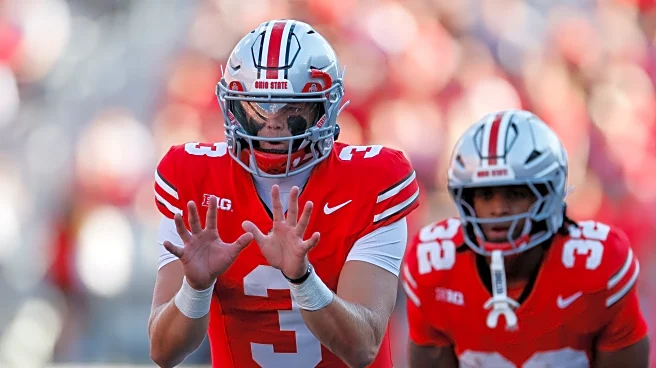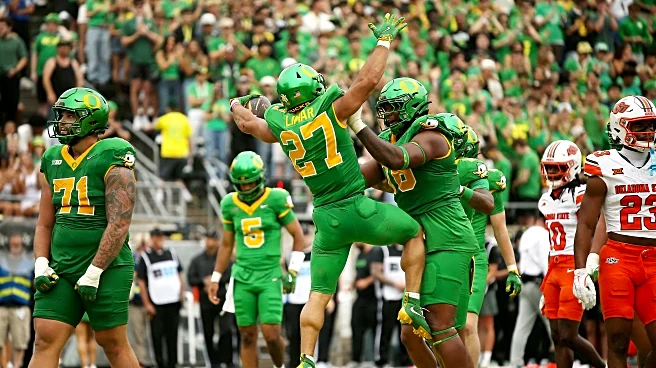
A year ago, we witnessed a total implosion in Madison as offensive coordinator Phil Longo tried to implement an Air Raid offense that failed in 2023, then head coach Luke Fickell tried to make Longo run a not-air-raid offense, and it, predictably, went poorly. The Badgers averaged a pathetic 22.6 points per game (109th in the country). Granted, they did lose their starting QB to injury in week 3, but it was still a frankenstein of an offense with an OC and a head coach who didn’t agree on what the scheme
should be.
Well, Longo got fired, and Jeff Grimes was hired out of Kansas.
At its core, Grimes’ offense challenges defenses by blending an outside-zone run game with complementary play-action concepts. It’s designed to force defenders to make snap decisions using pre-snap motion to put them into conflict, exploiting overcommitment and creating opportunities at every level of the field to keep opposing teams off balance.
“If you can run the football, then you can do anything,” Grimes explained. “Everything else is going to work. If you can’t run the football, you become one-dimensional. That’s where it starts—running the football and establishing an identity that is based on that and a rugged mentality.”
Grimes’ commitment to the run game isn’t just about grinding it out between the tackles—it’s about forcing defenses to adapt. His playbook blends different run concepts, using shifts, motions, and formations to create mismatches and open rushing lanes. Whether it’s outside-zone staples or misdirection plays that keep defenders guessing, Grimes ensures the ground game remains both physical and dynamic.
Grimes spent time at LSU as an OL coach under Les Miles and at Auburn under Gene Chizik. His first OC gig was at BYU, where he developed Zach Wilson, then went on to Baylor and had an exceptional season before seeing his results decline the next few years.
The scheme is very much a run-first offense, often operating out of under center looks such as the singleback and I-formations, or using two split running backs in shotgun. He even uses an acutal fullback! Grimes primarily specialized in wide zone running during his days at Baylor/Kansas, but the Badgers have been using quite a bit of iso and duo rushing plays so far through a couple of games this season.
The rushing attack is a creative one, using fullback and tight end blockers in a variety of locations and directions, but is ultimately built on the running back hitting the line with a full head of steam and getting 5-6 yards like it’s 2007 all over again.
The passing game, though, is where Grimes has struggled at previous stops and struggled in Week 1 this year against Miami (OH). It’s mostly play action based, and even then, most routes are quick, one-read slants, outs, or curls. There’s minimal explosiveness or design to get wide receivers the ball in any kind of space.
Essentially, the offense is very good at getting 5 yards in both the run and pass game, but not much else. And, while it seems efficient, all it takes for two plays to not work out, and a drive stalls.
As far as personnel, the Badgers also lack the horses to be a real contender on offense. QB Billy Edwards, Jr. transferred in to be the starter, but fell to a non-contact injury last week and was replaced by SDSU transfer, Danny O’Neil. O’Neil threw for 2000 yards with a respectable 63% completion rate for the Aztecs, but looked certifiably uncomfortable when he was thrust into action against Miami. He did throw for 283 yards on an 85% completion rate last week against Middle Tennessee State…. But it’s MTSU.
His receiving targets? Vinny Anthony was Wisconsin’s leading receiver last year with 672 yards, and looks to be the team’s main man again this year. He’s been a reliable target on the outside and leads the team with 8 catches for 107 yards this year. Trech Kekahuna also returns as a starter from a year ago, and mostly works out of the slot as a reverse and gadget play player.
Tight end Lance Mason was an an FCS All-American player for Missouri State a year ago and has acquitted himself well so far with 7 catches for 102 yards. He’s definitely a player to watch as Grimes likes to run play actions and have Mason running straight up the seam (I swear it’s the only vertical route in the offense).
In the rushing game, Dilin Jones is the lead man with 24 carries, but the rotation is rounded out with Darrion Dupree as Jones’s relief and Cade Yacamelli returns as the resident change of pace and pass-blocking back. All three will see plenty of time, but Jones is the engine of the offense as a one-cut runner who hits the gap between center and guard with reckless abandon. Finally, Wisconsin also has fullback Jackson Acker, who even got a couple of starts as a running back a year ago, but has been a fullback/TE for most of his career. At 6’1” 247, he’s got the prototypical size of a true throwback fullback, and he’s on the field a lot, even if he never records any stats.
This game will be an interesting challenge for Kane Wommack’s defense. While it’s nowhere near as much misdirection and QB scrambling as a Gus Malzahn special, it’s still a creative rushing attack. How will Alabama’s defensive line and linebackers handle a more in-your-face rushing game? I’m not sure it’s something we’ve seen in the last two seasons, and, in theory, could be something of a weak spot for a true 3-3-5 defense if the linemen are shooting gaps and Lawson/Jefferson aren’t up to the task of taking on guards up the middle.
On the other hand, the Tide secondary should be able to feast on their quick passing game, so, in theory, it should make the Badgers fairly one-dimensional and allow the Tide to dedicate extra resources up the middle.
While I obviously don’t know what to think about Alabama’s defense after two games this season, I do think that Wisconsin lacks the players to create too much of a threat, so somewhere in the range of 10-14 points seems about right. They’ll have a couple of decent drives that end in field goals, but a lack of overall explosiveness ultimately dooms them.
